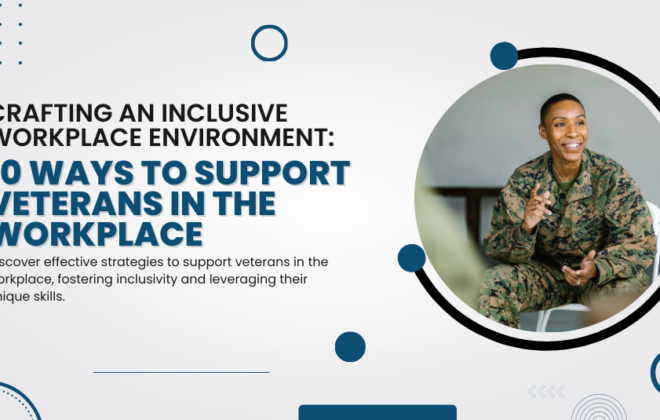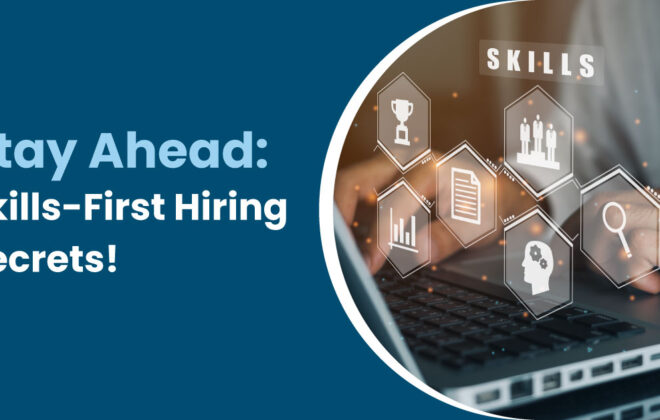Boost Your Staffing Strategy: 5 Essential Contingency Plans
Many businesses are grappling with staffing uncertainties like sudden departures to unforeseen market shifts. To navigate these uncertainties, it’s essential to have robust contingency plans in place. These plans not only ensure business continuity but also empower organizations to adapt swiftly to unforeseen challenges. Here are five essential contingency plans to bolster your staffing strategy:
- Cross-Training Initiatives:
One of the most effective ways to prepare for unexpected disruptions is by implementing cross-training initiatives across your workforce.
According to a survey by the Society for Human Resource Management (SHRM), companies that invest in cross-training report a 10% increase in employee engagement and a 5% increase in overall productivity.
Cross-training involves teaching employees the skills and responsibilities of their colleagues in different departments. This not only creates a more versatile and adaptable workforce but also mitigates the impact of unexpected absences. In practice, cross-training ensures that employees can seamlessly step into other roles when needed, preventing productivity bottlenecks. For example, if an important team member is suddenly unavailable, a cross-trained colleague can temporarily fill the gap, minimizing the impact on projects and deadlines.
- Remote Work Readiness:
The global shift towards remote work has accelerated in recent times, making it crucial for organizations to be prepared for this mode of operation. A PwC survey revealed that 83% of employers believe the shift to remote work has been successful for their company. A contingency plan that addresses remote work readiness involves assessing the technological infrastructure, providing necessary tools, and establishing clear communication channels.
Investing in secure and efficient remote collaboration tools, ensuring all employees have access to necessary equipment, and implementing cybersecurity measures are vital components of this plan. This ensures that your workforce can seamlessly transition to remote work if needed, maintaining productivity and minimizing disruptions during unforeseen circumstances such as natural disasters or global health crises.
- Talent Pipeline Development:
Establishing a robust talent pipeline is a proactive approach to safeguarding your organization’s staffing needs. According to a report by LinkedIn, organizations that maintain an active talent pipeline reduce their time-to-fill roles by 32%. This involves continuously scouting for and nurturing potential candidates, even when there are no immediate openings. Building relationships with universities, professional organizations, and industry networks can help create a pool of qualified individuals who can be tapped into when rapid hiring is required.
By maintaining an active talent pipeline, organizations can remarkably reduce the resources and time needed to fill critical positions during sudden staffing shortages. This strategic approach also contributes to fostering a positive employer brand, as potential hires are more likely to be interested in organizations that prioritize talent development.
- Flexible Work Arrangements:
Flexibility in work arrangements has become a key factor in attracting and retaining skilled top talent. According to a report by FlexJobs, 65% of workers believe they would be more productive working remotely than in a traditional office environment. Implementing contingency plans that incorporate flexible work options, such as compressed workweeks, job-sharing, or flexible hours, not only enhances employee satisfaction but also provides a safety net during unexpected events.
In times of crisis or disruptions, flexible work arrangements can help employees manage personal challenges, ensuring they remain engaged and productive. Additionally, having policies in place for temporary remote work or alternative work schedules can contribute to a more resilient and adaptable workforce.
- Succession Planning:
Succession planning is a strategic approach to identifying and developing internal talent to fill key roles within the organization. A Harvard Business Review study found that organizations with a formal succession planning process in place are 2.5 times more likely to be high-performing. This contingency plan involves identifying high-potential employees, assessing their skills, and providing targeted training to prepare them for leadership positions.
A well-executed succession plan ensures that there is a pool of qualified talent ready to step into critical roles in the event of unexpected vacancies. This not only safeguards the continuity of business operations but also contributes to a smoother transition, as successors are already familiar with the organization.
Flexible Staffing: Crafting the Future of Workplace Success
Our brand distinguishes itself through a commitment to innovation, foresight in anticipating shifts within the industry, and the delivery of bespoke solutions that redefine the landscape of talent management. The elements that set us apart are as follows:
- Forward-Thinking Approach: We place a premium on solutions that are not only current but are crafted with an eye towards the future. Our investments in remote work preparedness and cutting-edge tools position our clients for success in a dynamic and evolving business environment.
- Holistic Talent Development: Our concentration on cross-training endeavors ensures that our workforce is not only versatile but is also endowed with a diverse skill set, fostering organizational flexibility and resilience.
- People-Centric Succession Planning: Our approach to succession planning transcends the mere act of filling vacant positions. It is a nuanced endeavor focused on identifying individuals who not only possess the requisite skills but also embody the cultural essence of our clients. This ensures a transition that is not just efficient but seamlessly human-centered.
- Tailored and Flexible Solutions: Recognizing the distinct needs of each organization, we proffer bespoke strategies. From flexible work arrangements to specialized talent pipeline development, our solutions are tailored to suit the unique requirements of each client.
- Proactive Problem Solving: Our contingency plans are not reactive measures; they are proactive initiatives designed to empower organizations in navigating uncertainties. Whether dealing with sudden departures or shifts in the market, our approach is one of proactive problem-solving, providing our clients with the confidence to confront and overcome challenges.
In conclusion, a robust staffing strategy goes beyond day-to-day operations and incorporates contingency plans to navigate the uncertainties of the business environment. By implementing cross-training initiatives, ensuring remote work readiness, developing a talent pipeline, embracing flexible work arrangements, and engaging in succession planning, organizations can fortify their ability to respond effectively to unexpected staffing challenges. These proactive measures not only contribute to business continuity but also position organizations to thrive in an ever-evolving marketplace.
Most pressing recruitment challenges and how to overcome them
- Competition in the Job Market
- Cost of Hiring
- Skill Shortages
- Diversity and Inclusion in Hiring
Related Posts
Subscribe For Updates
Categories
- Accountant
- AI
- Automation
- Awards and Recognitions
- Blue Collar Staffing
- Burnouts
- Campus Recruiting
- Cloud
- Co-Ops agreements
- Company Culture
- Compliance
- contingent workforce
- Contingent Workforce
- COVID-19
- Cyber Security Staffing
- Data Strategy
- Digital Transformation
- direct sourcing
- Distributed Workforce
- Diversity
- Diversity & Inclusion
- Economy
- Events & Conferences
- fleet industry
- Gig Economy
- Girls in Tech
- Global Talent Research and Staffing
- Government
- Healthcare
- Healthcare Staffing
- Hiring Process
- Hiring Trends
- Home Helathcare
- HR
- HR Practices
- HR Tech
- IT
- Labor Shortages
- Life Science
- Local Governments
- News
- Nursing
- Payroll Staffing
- Public Sectors
- Recruiting
- Remote Work
- Skill Gap
- SMB Hiring
- Snowflake
- Staffing
- Staffing Augmentation
- Staffing Challenges
- Talent ROI
- Tech Staffing
- Technology
- Tips & tricks
- Total Talent Management
- UI/UX Design
- Uncategorized
- Veteran Staffing
- Veterans Hiring
- Veterans Hiring
- Workforce Management
Recent Posts
- Automation in Recruiting: From Chatbots to Predictive Screening
- Gig Economy Expansion: The Impact on Talent Pools and Business Models
- Skills-Based Hiring: Why Credentials Alone Don’t Cut It in 2025
- Procurement 3.0: AI & Intelligent Automation in 2025
- Q3 Is Here: Is Your Contingent Workforce Strategy Falling Behind?
Newsletter
Archive
- September 2025
- August 2025
- June 2025
- April 2025
- March 2025
- December 2024
- November 2024
- October 2024
- September 2024
- August 2024
- July 2024
- June 2024
- May 2024
- April 2024
- March 2024
- February 2024
- January 2024
- December 2023
- November 2023
- October 2023
- September 2023
- August 2023
- July 2023
- June 2023
- May 2023
- April 2023
- March 2023
- February 2023
- December 2022
- November 2022
- October 2022
- September 2022
- August 2022
- July 2022
- June 2022
- November 2021
- October 2021
- September 2021
- August 2021
- July 2021
- June 2021
- May 2021
- April 2021
- March 2021
- February 2021
- January 2021
- December 2020
- November 2020
- October 2020
- September 2020
- August 2020
- July 2020
- June 2020
- May 2020
- April 2020
- March 2020
- February 2020
- January 2020
- December 2019
- November 2019
- October 2019
- September 2019
- August 2019
- July 2019
- June 2019
- May 2019
- January 2019
- December 2018
- November 2018
- October 2018
- September 2018
- August 2018
- July 2018
- June 2018
- May 2018
- April 2018
- March 2018
- February 2018
- January 2018
- December 2017
- November 2017
- October 2017
- September 2017
- August 2017
- July 2017
- June 2017
- May 2017
- November 2016
- October 2016




